Abstract
It was previously postulated, based on indirect evidence, that Clostridium botulinum type B produces neurotoxin which is initially of low toxicity but which then becomes activated to highly toxic form by the action of an endogenous enzyme(s). The first direct in vitro experimental evidence in support of this hypothesis is presented here. The mildly active toxin (progenitor toxin) produced by C. botulinum type B (Lamanna) was isolated from the filtrate of a 24-hr culture and partially purified chromatographically. An enzyme that activates the progenitor toxin was also isolated from the filtrate of a 96-hr culture and purified 200-fold. The enzyme hydrolyzes synthetic substrates of trypsin but not of chymotrypsin.
Full text
PDF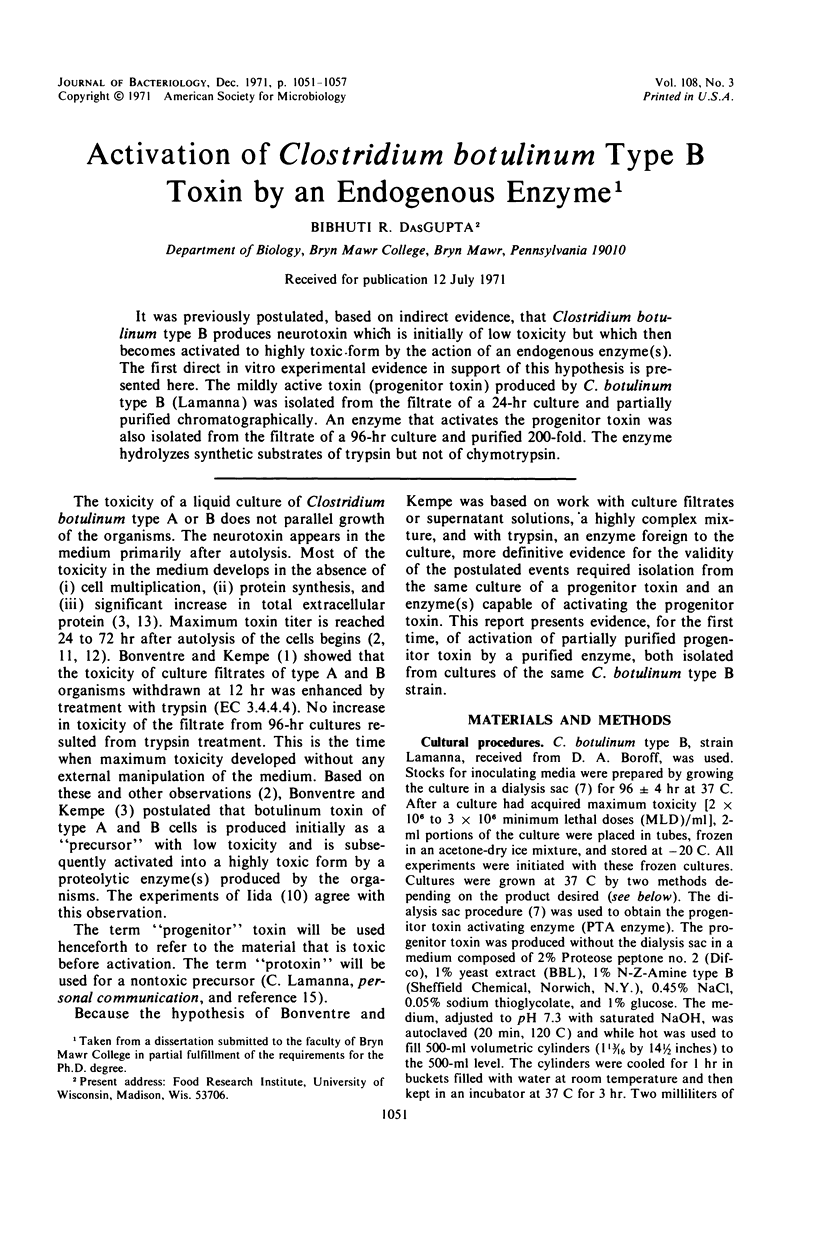
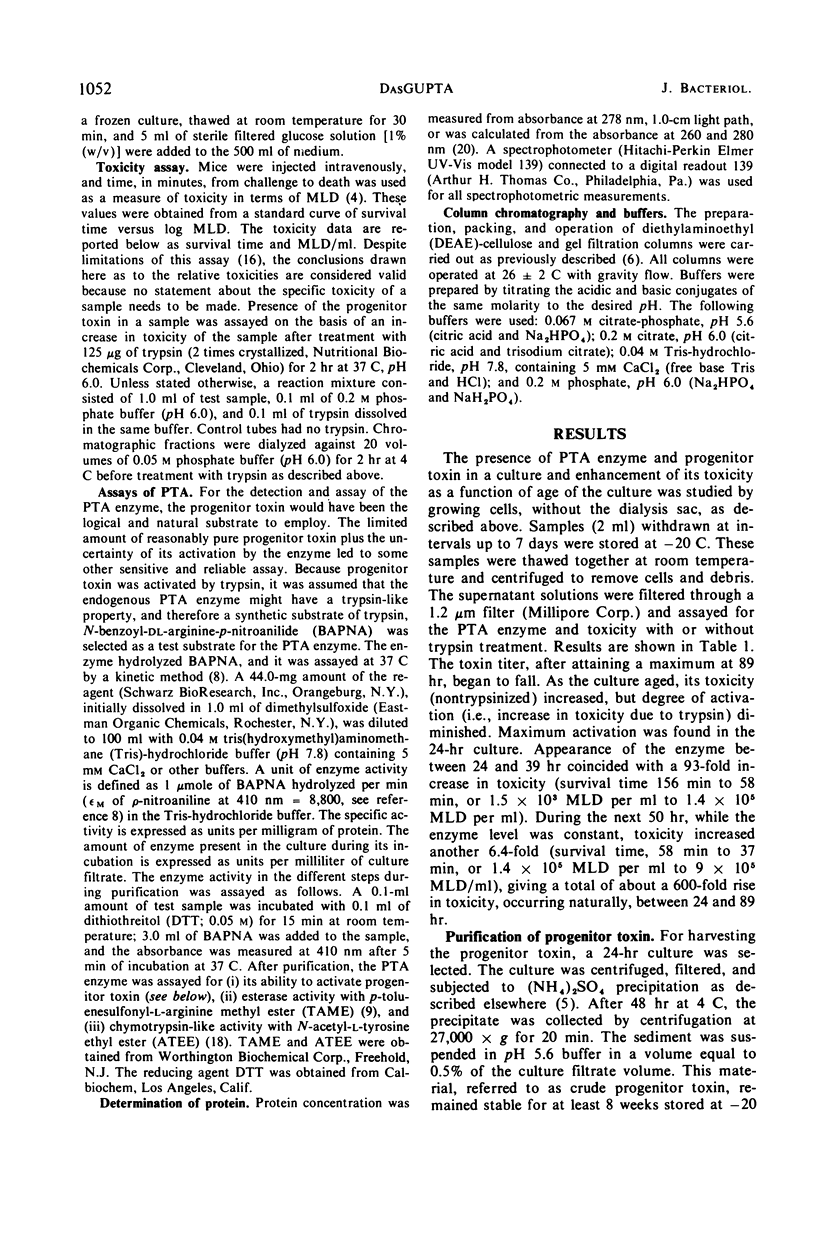
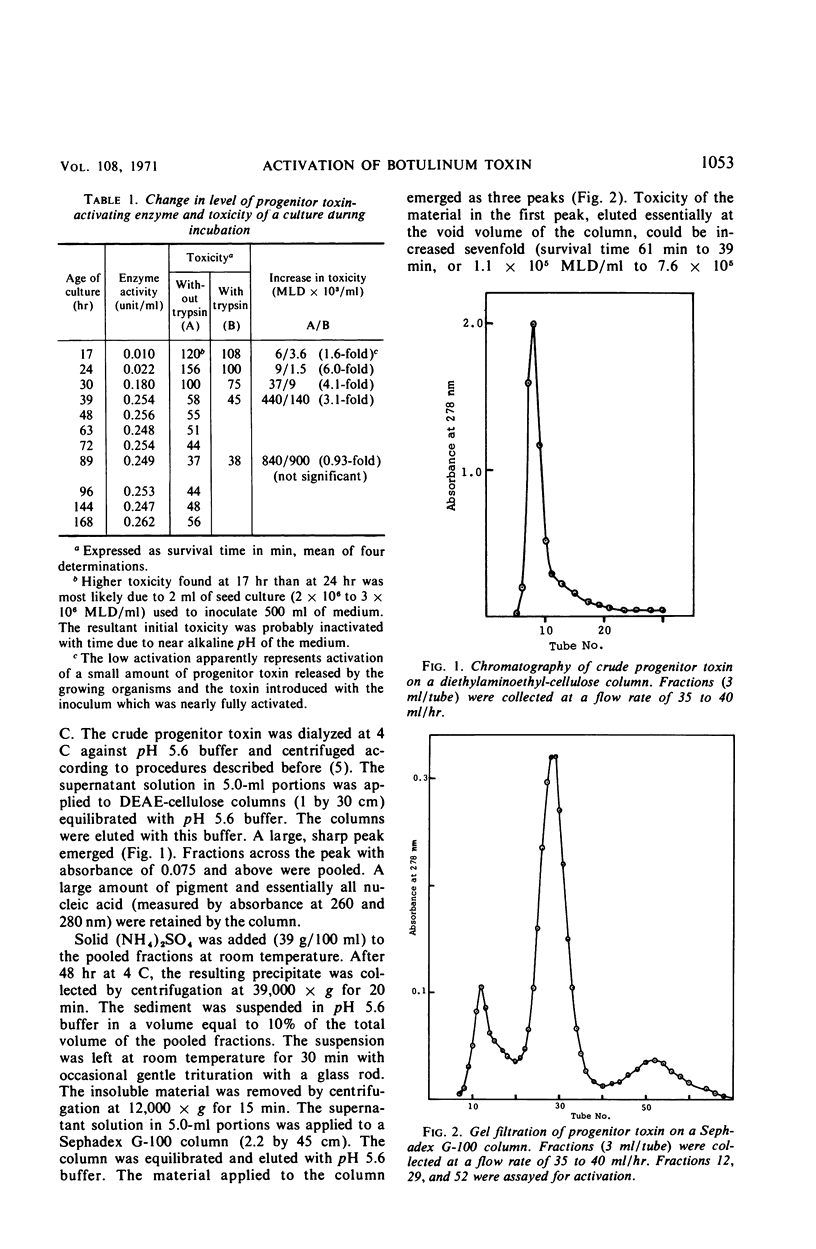
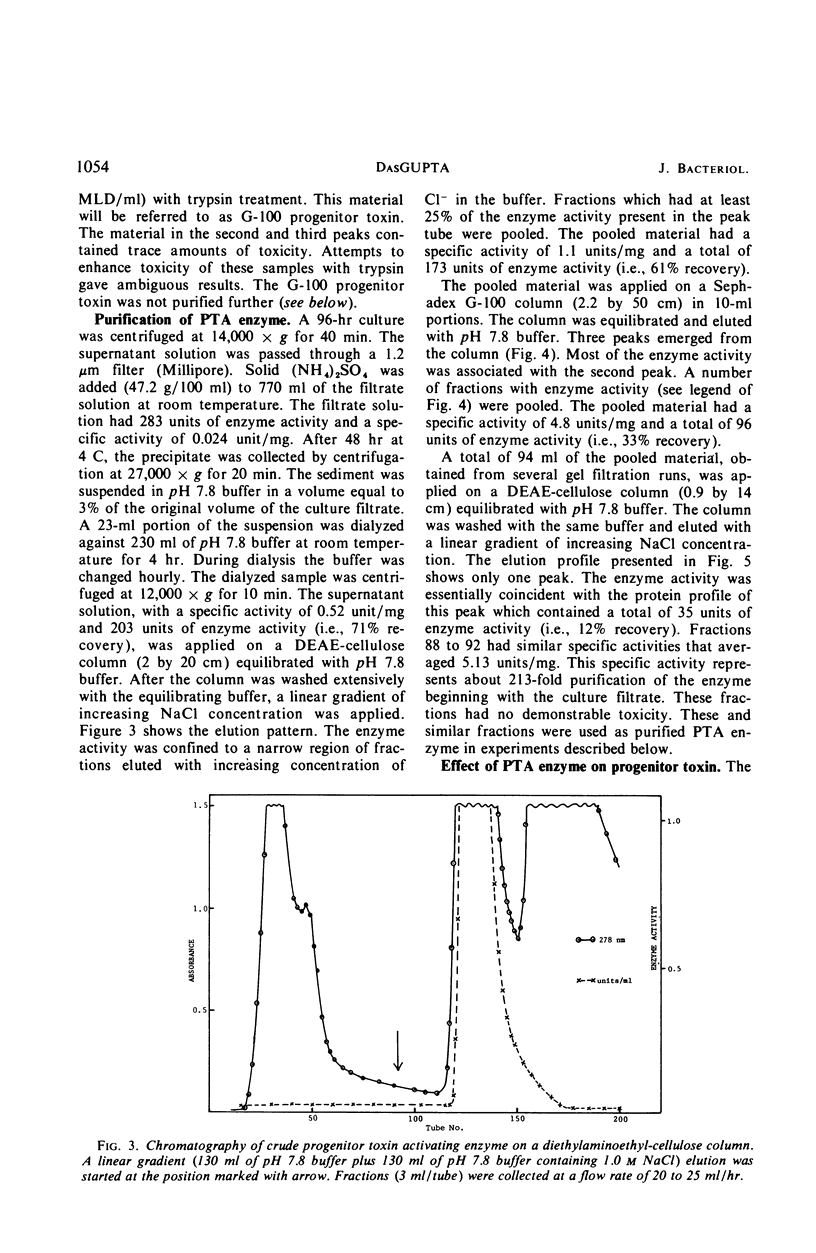
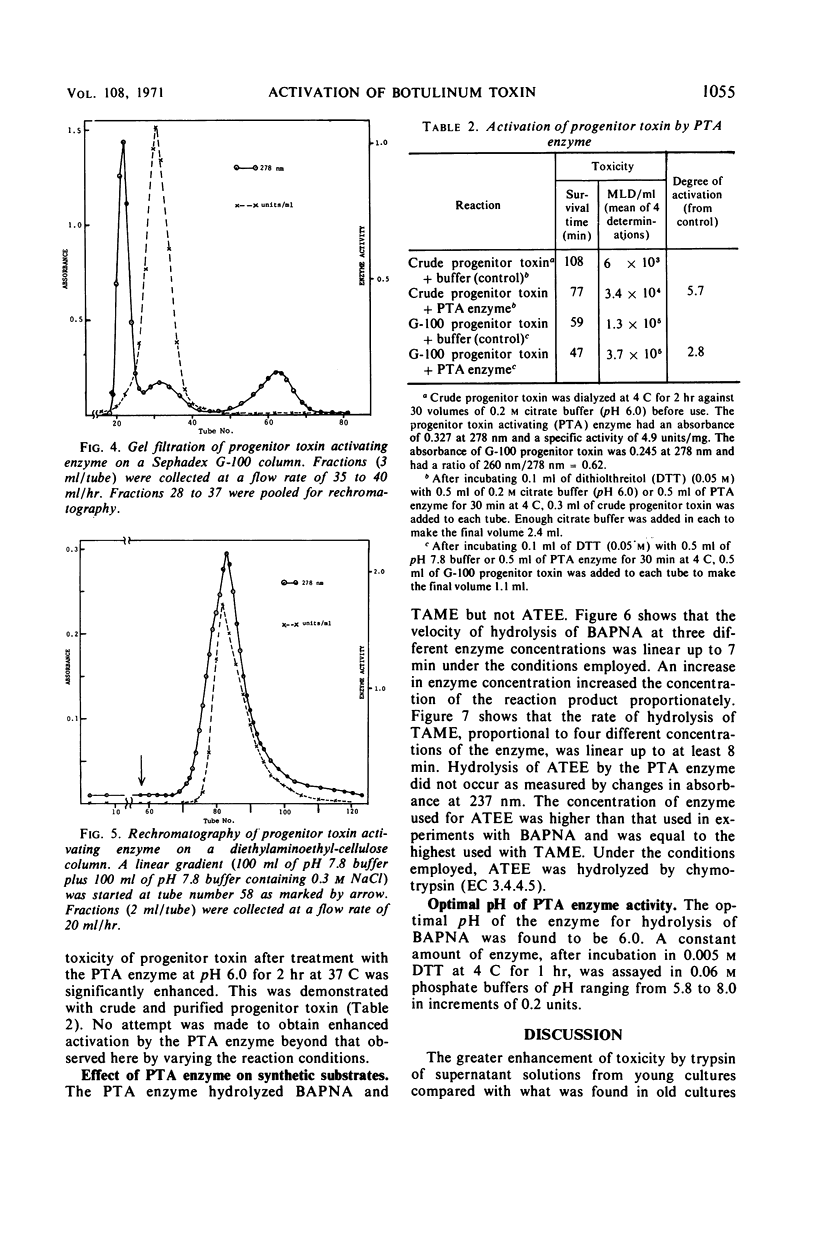
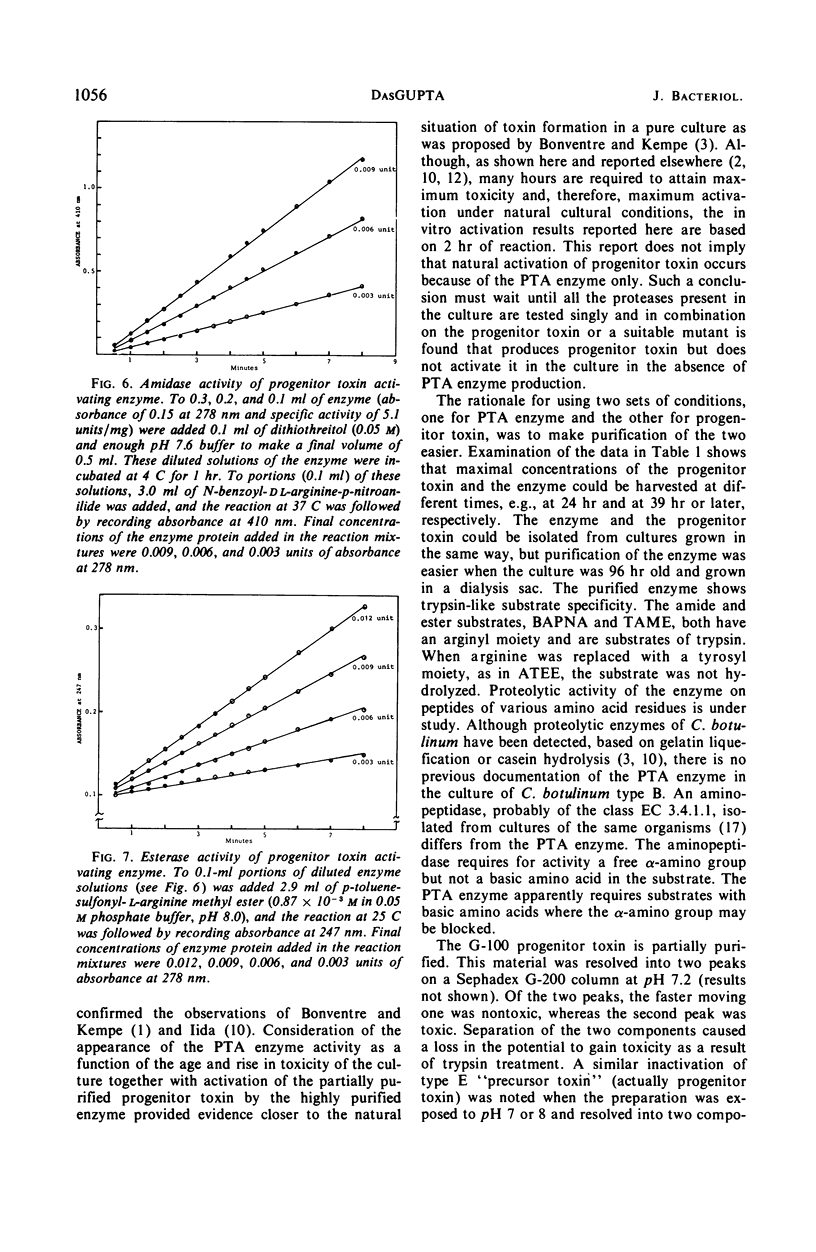
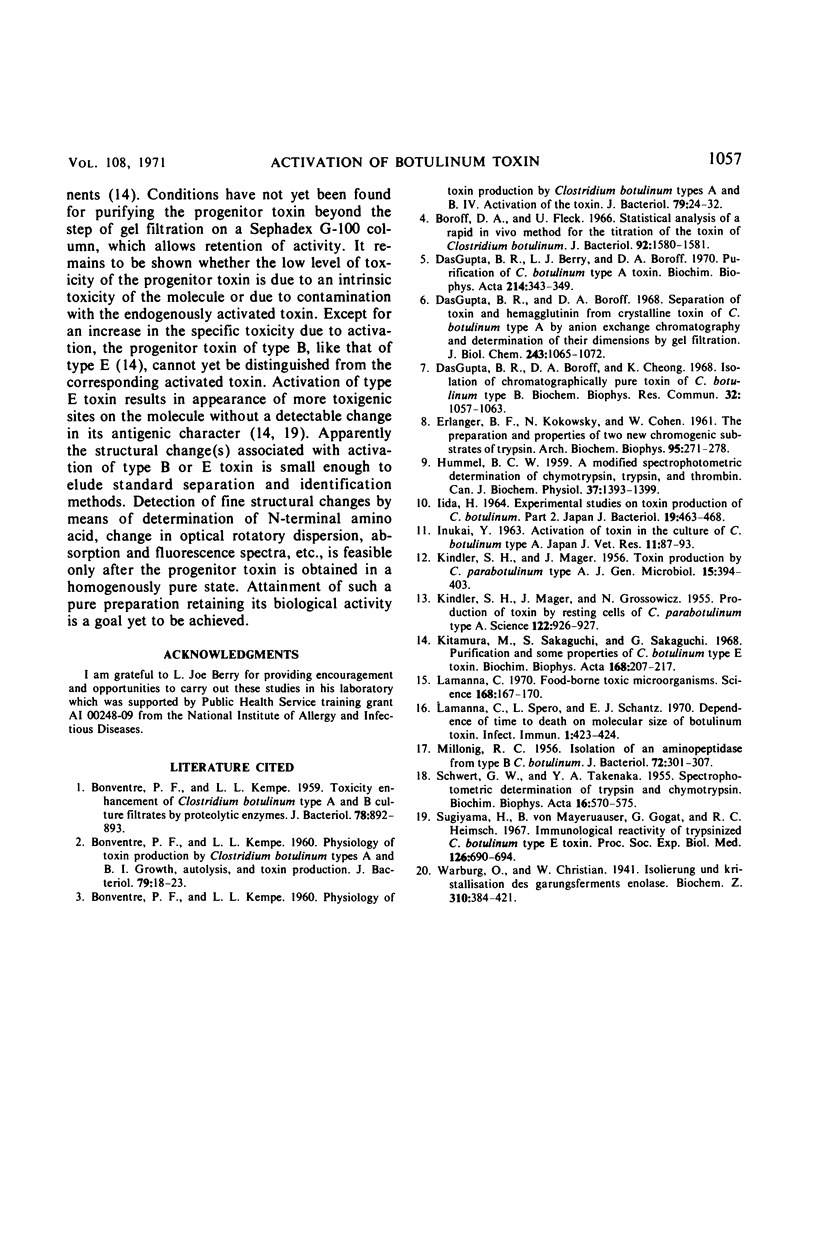
Selected References
These references are in PubMed. This may not be the complete list of references from this article.
- BONVENTRE P. F., KEMPE L. L. Physiology of toxin production by Clostridium botulinum types A and B. I. Growth, autolysis, and toxin production. J Bacteriol. 1960 Jan;79:18–23. doi: 10.1128/jb.79.1.18-23.1960. [DOI] [PMC free article] [PubMed] [Google Scholar]
- BONVENTRE P. F., KEMPE L. L. Physiology of toxin production by Clostridium botulinum types A and B. IV. Activation of the toxin. J Bacteriol. 1960 Jan;79:24–32. doi: 10.1128/jb.79.1.24-32.1960. [DOI] [PMC free article] [PubMed] [Google Scholar]
- BONVENTRE P. F., KEMPE L. L. Toxicity enhancement of Clostridium botulinum type A and B culture filtrates by proteolytic enzymes. J Bacteriol. 1959 Dec;78:892–893. doi: 10.1128/jb.78.6.892-893.1959. [DOI] [PMC free article] [PubMed] [Google Scholar]
- Boroff D. A., Fleck U. Statistical analysis of a rapid in vivo method for the titration of the toxin of Clostridium botulinum. J Bacteriol. 1966 Nov;92(5):1580–1581. doi: 10.1128/jb.92.5.1580-1581.1966. [DOI] [PMC free article] [PubMed] [Google Scholar]
- DasGupta B. R., Boroff D. A., Cheong K. Isolation of chromatographically pure toxin of Clostridium botulinum type B. Biochem Biophys Res Commun. 1968 Sep 30;32(6):1057–1063. doi: 10.1016/0006-291x(68)90137-x. [DOI] [PubMed] [Google Scholar]
- DasGupta B. R., Boroff D. A. Separation of toxin and hemagglutinin from crystalline toxin of Clostridium botulinum type A by anion exchange chromatography and determination of their dimensions by gel filtration. J Biol Chem. 1968 Mar 10;243(5):1065–1072. [PubMed] [Google Scholar]
- Dasgupta B. R., Berry L. J., Boroff D. A. Purification of Clostridium botulinum type A toxin. Biochim Biophys Acta. 1970 Aug 21;214(2):343–349. doi: 10.1016/0005-2795(70)90011-5. [DOI] [PubMed] [Google Scholar]
- ERLANGER B. F., KOKOWSKY N., COHEN W. The preparation and properties of two new chromogenic substrates of trypsin. Arch Biochem Biophys. 1961 Nov;95:271–278. doi: 10.1016/0003-9861(61)90145-x. [DOI] [PubMed] [Google Scholar]
- GROSSOWICZ N., KINDLER S. H., MAGER J. Toxin production by Clostridium parabotulinum type A. J Gen Microbiol. 1956 Oct;15(2):394–403. doi: 10.1099/00221287-15-2-394. [DOI] [PubMed] [Google Scholar]
- HUMMEL B. C. A modified spectrophotometric determination of chymotrypsin, trypsin, and thrombin. Can J Biochem Physiol. 1959 Dec;37:1393–1399. [PubMed] [Google Scholar]
- KINDLER S. H., MAGER J., GROSSOWICZ N. Production of toxin by resting cells of Cl. Parabotulinum type A. Science. 1955 Nov 11;122(3176):926–927. doi: 10.1126/science.122.3176.926. [DOI] [PubMed] [Google Scholar]
- Kitamura M., Sakaguchi S., Sakaguchi G. Purification and some properties of Clostridium botulinum type-E toxin. Biochim Biophys Acta. 1968 Oct 21;168(2):207–217. doi: 10.1016/0005-2795(68)90144-x. [DOI] [PubMed] [Google Scholar]
- Lamanna C. Food-borne toxic microorganisms. Science. 1970 Apr 3;168(3927):167–170. doi: 10.1126/science.168.3927.167. [DOI] [PubMed] [Google Scholar]
- Lamanna C., Spero L., Schantz E. J. Dependence of time to death on molecular size of botulinum toxin. Infect Immun. 1970 Apr;1(4):423–424. doi: 10.1128/iai.1.4.423-424.1970. [DOI] [PMC free article] [PubMed] [Google Scholar]
- MILLONIG R. C. Isolation of an aminopeptidase from type B Clostridium botulinum. J Bacteriol. 1956 Sep;72(3):301–307. doi: 10.1128/jb.72.3.301-307.1956. [DOI] [PMC free article] [PubMed] [Google Scholar]
- SCHWERT G. W., TAKENAKA Y. A spectrophotometric determination of trypsin and chymotrypsin. Biochim Biophys Acta. 1955 Apr;16(4):570–575. doi: 10.1016/0006-3002(55)90280-8. [DOI] [PubMed] [Google Scholar]


